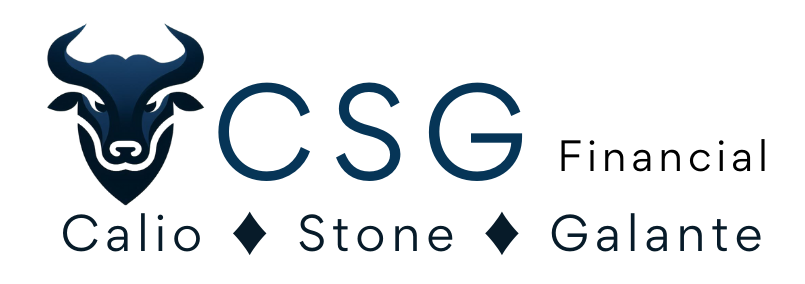When Jane first walked into our office, she was overwhelmed and anxious about her impending retirement. Despite having worked diligently for decades, she felt utterly unprepared to retire comfortably. Jane’s primary concern was the array of retirement accounts she had accumulated over her career from various jobs. She had old 401(k)s, IRAs, and a pension plan scattered across multiple financial institutions. The lack of a cohesive strategy left her feeling uncertain about her financial future, and even worse – she didn’t have the confidence in her own situation to take that next step towards the retirement she could very much afford.
The Challenge
Jane’s financial landscape was just as typical as the 100k+ investors who have worked at different companies over their careers. Each job change came with a new retirement plan + benefits, and over the years, these accounts became fragmented. Jane was unsure how much she had saved in total, wasn’t sure who to call for each account separately, how to change investments (Or what they should be for that matter), and simply felt helpless.
The Solution
Our first step was to gather all of Jane’s financial documents and create a comprehensive inventory of her retirement accounts + debts. We discovered that she had multiple 401(k)s from previous employers, two IRAs, and a small pension plan, but no debt. By consolidating these accounts, we aimed to streamline her portfolio, reduce management fees, and simplify her financial planning by making the accounts work congruently alongside one another.
Consolidation:
- Rolling Over 401(k) Accounts: We initiated rollovers of Jane’s old 401(k) accounts into a single IRA. This consolidation not only reduced her administrative burden by giving her a direct contact person who knew her situation, but also provided her with a clearer picture of her total retirement savings and how they were invested.
- IRA Simplification: Jane had two IRAs with different financial institutions. We transferred these into one IRA, making it easier to manage and reducing the complexity of her investment strategy. This also helped lower fees across the board.
- Building Expense “Guard-Rails:” With Jane having almost no debt, we needed to drill down to figure out what it costs to be her on a monthly basis, focused on fixed expenses. From there, we began to figure out what the “Guard-Rails” for her yearly minimum & maximum spending were. Not only did this allow us to back-wards solve into figuring out how to allocate her account(s), it also gave her added confidence to take an extra trip, etc. as she knows she can support a higher spending ceiling, without having to worry about overspending.
Retirement Income Waterfall
With Jane’s accounts consolidated, we turned our attention to creating a robust retirement income strategy that could adapt to market conditions, sustain her monthly expenses without getting out-inflated, but not over-expose her to unnecessary risk(s). Our goal was to ensure that Jane could maintain her lifestyle throughout retirement without the fear of running out of money.
- Building the Waterfall: We developed a retirement income “Waterfall” strategy for Jane, which prioritized the amount of risk being taken in different “Sleeves” of her account. Based on her fixed expenses & guard-rail numbers, we backwards solved into an investment strategy that mitigates risk in the short-term, but also focuses on out-pacing inflation congruently in longer time-horizon “Sleeves.”
- Cash Reserve: We established a cash reserve equivalent to two years of living expenses. This provided Jane with a safety net during market downturns, allowing her to avoid withdrawing from investment accounts when their value was down. Above & beyond, we added cash-equivalents to the immediate “Sleeves” in her other accounts, with the aim for her to never take income from a volatile equity, allowing for a more projectable investment path across the board, and mitigating risk in rougher market years.
- Taxable Accounts: Depending on income (Accounting for Social Security also), we put together a decumulation strategy for some of the capital-gain eligible holdings she had. On a year-by-year basis we get a sense of where the current tax situation lies, and try to tactically de-risk this account as much as possible, without pushing her into a higher bracket.
- Tax-Deferred Accounts: When additional funds were needed, we went to the Pre-Tax accounts first, but also needed to take into account the income that’ll be recognized. Depending on that year’s tax status, we may pull all of her income from a pre-tax account, a portion of it, or none. This comes down not only to where markets are, but also where the tax code and her current bracket in a given year.
- Roth IRA: As soon as we met Jane, we immediately began discussing the concept of doing Roth conversions over the next couple of years. Again, accounting for current tax status, we strategically converted specific amounts year-by-year. This allows her to control the tax-bill each year, as well as the bracket she falls in (Within reason). Lastly, since RMD rules don’t apply to a Roth, nor does the 10-year stretch rule for beneficiaries, this account is now one that can take more risk, as we won’t be forced to take money from it at any time unless needed by Jane. Even more important, the “Growth-Focused” equities in her overall plan that are held in this account, won’t need to be force-sold, allowing for more potential generational wealth to pass to her next generation.
Roth Conversion Strategy
To further enhance Jane’s retirement security and tax efficiency, we considered the benefits of Roth conversions. By converting a portion of her traditional IRA funds into a Roth IRA, Jane could take advantage of tax-free growth and withdrawals in the future.
- Tax Bracket Management: We carefully planned the Roth conversions to avoid pushing Jane into a higher tax bracket as referenced above. By spreading the conversions over several years, Jane was able to manage her taxable income effectively.
- Future Tax Savings: The Roth conversion strategy provided Jane with a hedge against future tax rate increases. Since qualified withdrawals from Roth IRAs are tax-free, Jane gained peace of mind knowing that a portion of her retirement income would not be subject to taxes.
The Confident Retirement Outcome
By consolidating her retirement accounts and devising a tax-efficient income strategy, Jane’s financial picture became much clearer and more manageable. The streamlined portfolio reduced her stress and administrative load, allowing her to focus on enjoying her retirement, especially with her new-found confidence in her overall plan. With a well-thought-out retirement income “Waterfall,” and Roth conversion strategy(s) in place, Jane had the confidence that her retirement income would be sufficient and sustainable.
Conclusion
Jane’s case is a testament to the power of financial planning, being tactical, and also proactive. By taking the time to understand her unique situation and goals, we were able to create a cohesive & congruent retirement plan that provided clarity and confidence.







